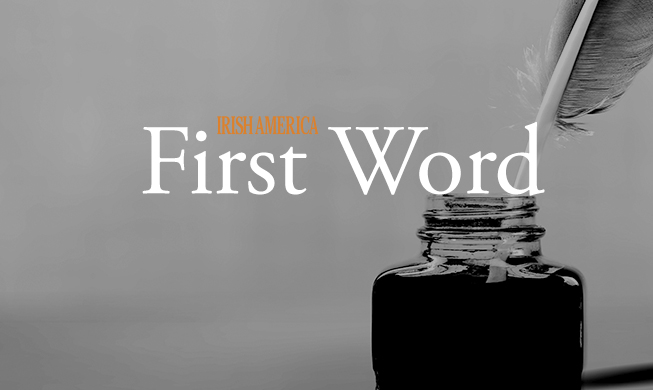
“IRA, Killing 2 Policemen Cripples the Irish Peace Talks,” says the front page headline in the New York Times story by Sarah Lyall, writing from London.
Indeed, the recent shootings of the two RUC officers was front page news around the world, and brought outrage from all corners.
But, heinous as the IRA killings are, the IRA alone is not responsible for crippling the peace process. There are many factors involved which, unfortunately for the nationalist community, are all too easily forgotten as the horror story of this latest “terrorist” action takes precedence.
Let’s go back to July of 1995. The IRA ceasefire is ten months old. The British are stalling on Sinn Féin’s admission to talks, demanding that the IRA first decommission its weapons. (There is no such stipulation in the Downing Street Declaration, the document which paved the way for the ceasefire).
Albert Reynolds, the Irish Taoiseach who helped draw up the Declaration, is no longer in power. His successor, John Bruton, will not argue the decommissioning point.
All of these factors chip away at the peace process. But perhaps the first “crippling” blow is dealt by the British, who, while refusing to move on the issue of political prisoners, release Private Clegg, a paratrooper who shot dead a West Belfast teenager. He had served only four years of a life sentence.
Private Clegg’s release on the eve of a Tory leadership election (Major rules with the help of the Unionist vote) severely undermines the confidence and trust the nationalists have in the British and leads to speculation that it is the British military who call the shots on Northern Ireland.
The nationalist community riots, but the ceasefire holds.
A few days later, all attention shifts to the marches. The peace process is dealt another blow as loyalists use intimidation and violence to force a march through a Catholic area in Portadown, where, for the first time in the history of the State, the RUC enforces a ban on loyalists marching down the nationalist Garvaghy Road. Thousands of loyalists stormed the barricades at the urging of Unionist MPs Ian Paisley and David Trimble, and after just two days, the marchers are allowed through.
In Belfast, the RUC virtually hold the nationalist community under house arrest as they allow the loyalists to march down the Ormeau road. Throughout the summer, loyalist marches spark riots in Derry and Belfast, the nationalists take a beating. (93% of the police are from the unionist community, and their anger at being caught in the middle is very often directed at nationalists). Against all the odds the ceasefire holds.
In the summer of 1996 (the ceasefire ended in February with the British still stalling on decommissioning and no one talking to Sinn Féin) the RUC again ban a march down the Garvaghy Road. Riots by loyalists in Derry and Belfast are the worst in a decade. After five days, the marchers are once again allowed through and nationalists riot.
And so to the onset of this year’s marching season. Enrollment in Orange Lodges is at an all time high. (Not since Carson rallied the Unionists against Home Rule in 1910 has there been such an increase in membership). Lambeg dram and banner makers are having trouble filling the orders.
An off-duty RUC man is kicked to death by a group of loyalists who took issue with a march on a Catholic church in Dunloy, Co. Antrim being banned. (The church has been under siege for almost a year by loyalists trying to prevent Catholics from attending mass.) The loyalists also kill a Catholic man in Derry (father of six and a chairman of the GAA).
“Murder, is murder, is murder,” to quote Margaret Thatcher, but the loyalist killings are all but forgotten as all eyes turn to the shooting of the two policemen by the IRA.
There is no listening to the nationalist side of the story now. And that’s the madness of it. In the 18 months of the ceasefire, when Sinn Féin president Gerry Adams visited the U.S. and told the story of his community so well, it was the beginning of an understanding by the outside world. All that is lost now, it slowly began to drain away after the Canary Wharf bombing in London that ended the ceasefire.
It’s back to business as usual in the North. Unionist politicians who will lead the marchers to further violence this summer (they have already applied for a longer marching season in what seems to be a deliberate incitement to riot) will still be allowed attend the talks. Sinn Féin will not.
The British seem set to take the hard line approach — and many believe, despite the rumblings by Prime Minister Tony Blair, that this is the tack they always intended to take. If that’s the case the IRA has played right into their hands.
Editor’s Note: This article was originally published in the July/August issue of Irish America. ⬥


Leave a Reply